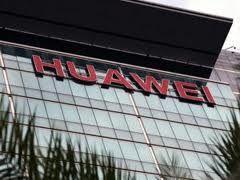  Huawei has launched FusionNet, a new generation of network architecture for LTE-B at Mobile World Congress (MWC) 2013.
This new architecture improves Cell Edge User (CEU) throughput by at least 500% with a series of multi-RAT, multi-band and multi-layer HetNet enhancements to realize No-Edge networks of seamless high-speed coverage.
Over the next 10 years, mobile data traffic capacity is expected to increase more than 500 times than what it is today. Such explosive levels of data traffic growth will present unprecedented challenges to current mobile broadband (MBB) network architecture, whereby improving and maintaining a seamless user experience will become crucial to future technical development.
Huawei’s FusionNet concept for LTE-B comprises several core technologies, including multi-stream aggregation, interference coordination, traffic adaptation and spectrum efficiency optimization. FusionNet coordinates existing LTE and LTE-A deployments and technologies (including CoMP and carrier aggregation) and delivers a fusion of multi-RAT, multi-band and multi-layer networks. A core benefit of FusionNet is its ability to drastically reduce network CAPEX and OPEX.
The FusionNet vision allows users to enjoy high speeds anywhere, anytime via access to reliable mobile broadband services. It delivers ultra-wideband, zero waiting and ubiquitous connectivity network capabilities to bring end-users high-speed and high-quality connections for a seamless, simple and service-enhanced mobile broadband experience.
Also at MWC 2013, Huawei unveiled its Ultra Node prototype design for future mobile broadband base stations. Ultra Node enhances the spectrum utilization and overall network efficiency to achieve a 50 Gbps peak data speed in a single node. Its core technologies (in addition to a redesigned antenna structure) greatly improves antenna performance, satisfies wideband and high network performance capacity demands, reduces networks costs and power loss, realizes multi-stream aggregation of ultra-widebands, and allows for greater channel capacity given implementation of a more advanced multi-antenna encoding algorithm.
For Latest Updates Visit : http://www.facebook.com/pages/TelecomTiger/429104257149437 |